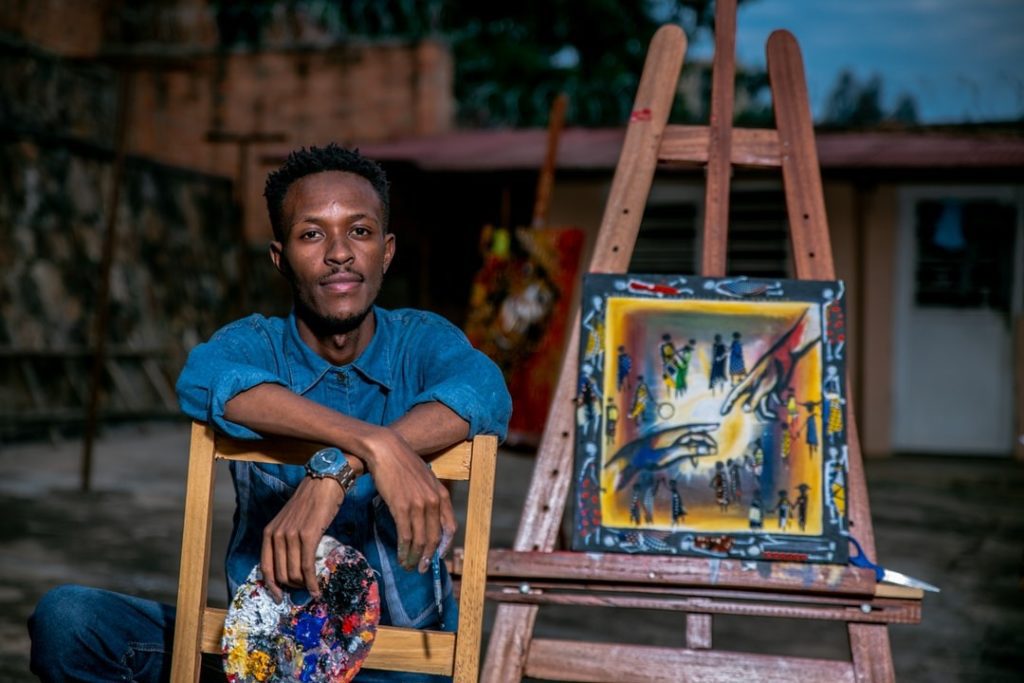Updated on May 31, 2023
Content reviewed by Nicholas G. Glines
The US Department of Veterans Affairs estimates between 11-20% of servicemen and women have a post-traumatic stress disorder (PTSD) diagnosis following their return from war. From this growing number, there is concern over the efficacy of post-war treatment. Research indicates that art therapy shows promise in treatment results among veterans.
There has been a push to implement more art therapy programs among veterans diagnosed with PTSD.
The Different Forms of Active Service-Related Trauma
Active service can be demanding, stressful and troubling for servicemen and women. No PTSD is the same as the next, meaning PTSD occurs for different reasons in different people. Art therapy can help understand the root cause of one’s PTSD. Some forms of trauma in the military include:
- Combat-Related Trauma: Combat is often associated with hostile military deployment missions, war, disaster relief or peace-keeping missions. With this will come various dangers and such dangers contribute to developing PTSD. During this time, servicemen and women could encounter a physical injury, lack of support systems and lack of mental health resources during combat. The need to remain resilient and move forward can be physically and mentally draining.
- Military Sexual Trauma (MST): Sexual trauma is prevalent among service members. It is sexual harassment that is threatening in character or physical assault of a sexual nature during active duty. While more males are in the military, females are 20 times more likely to encounter MST. Such cases remain frequent and need attention to address this growing problem.
Symptoms of PTSD
PTSD can create various symptoms that interfere with the quality of life. Some of the various symptoms of PTSD include:
- Intrusive Recollection
- Avoidance
- Feeling numb
- Depression
- Hypervigilance
- Flashbacks or nightmares
When these symptoms occur, they can hinder the quality of a veteran’s life. They even prevent them from performing routine tasks such as driving, grocery shopping or reading. When these symptoms become chronic, it may lead to developing PTSD.
How Art Therapy Can Help Treat PTSD
Traumatic events are difficult to express in words alone and art therapy offers a different approach to allow for individual expression. Art therapy utilizes artwork to explore feelings. This form of therapy can also help reconcile emotional conflicts self-awareness and manage substance use disorders that may accompany PTSD symptoms.
In conjunction with other methods such as cognitive behavioral therapy (CBT), such a form of therapy can make for a well-rounded therapeutic approach to address all symptoms associated with PTSD.
Traumatic events can limit a person’s ability to communicate verbally. Art allows individuals to express themselves non-verbally. Viewing an individual’s art is a form of self-expression that can reveal underlying emotions that affect the individual. Participating in activities such as painting, drawing or sculpting can help evaluate the level of trauma.
Other forms of art such as writing or playing music help veterans express themes that may contribute to their trauma. For example, some veterans write about missing loved ones, resiliency or family and friends. Such profound themes can reveal what is at the core of their trauma.
Art therapy is also a great way to connect veterans with fellow veterans. Sharing a space with others that understand what each other is going through can develop a sense of comfort and community. It is essential to provide a space for veterans because sometimes veterans could feel like outcasts in other group therapy settings that are not specific to meeting veterans’ needs. Veterans’ programs provide a safe space for veterans to manage their PTSD and any related substance use disorders.
Art Therapy Activities to Treat PTSD
The power of art therapy aims to spark your creativity. One of the most popular activities in art therapy is drawing. Drawing helps participants express their inner thoughts and discuss what they draw. Other forms of art therapy to boost creativity could include:
- Journaling
- Painting
- Sculpting
- Making masks
- Exercise
- Community of others that share similar experiences
Since creative therapy helps treat an array of PTSD-related symptoms, including combat and sexual trauma, the effectiveness of art therapy has seen more veterans’ programs implementing these practices into their therapy. It has also evolved to reflect the cultural and social diversity of people who engage with it.
Creative therapy confronts the underlying cause of trauma and allows individuals to express themselves in ways that perhaps their words cannot. Using creative therapy and other forms of therapy such as CBT will allow the individual to address their needs and inspire joy.
At New Hope Ranch, we employ veteran-specific PTSD and substance use recovery programs. Creative therapy is vital to this process. Our 49-acre ranch, located in Manor, Texas, offers you comfortable surroundings to explore different interests and activities. If you or your loved one is a veteran struggling to manage PTSD, the time to get help is now. To learn more about our veterans’ programs, contact New Hope Ranch and call (737) 600-8565.
